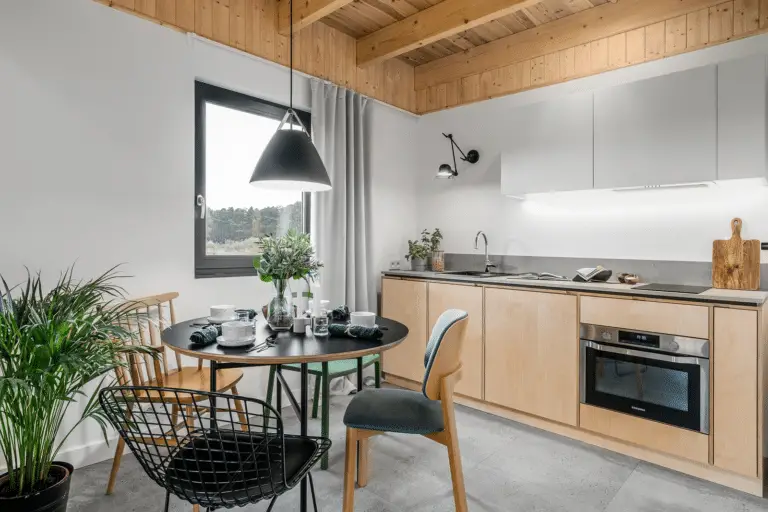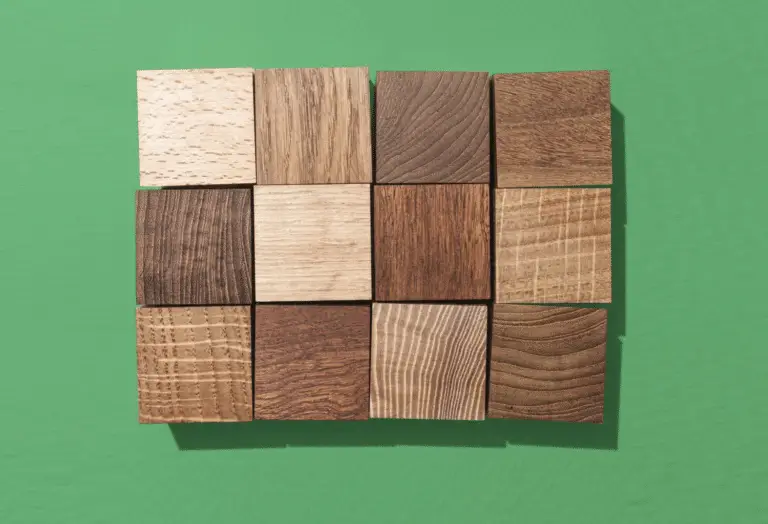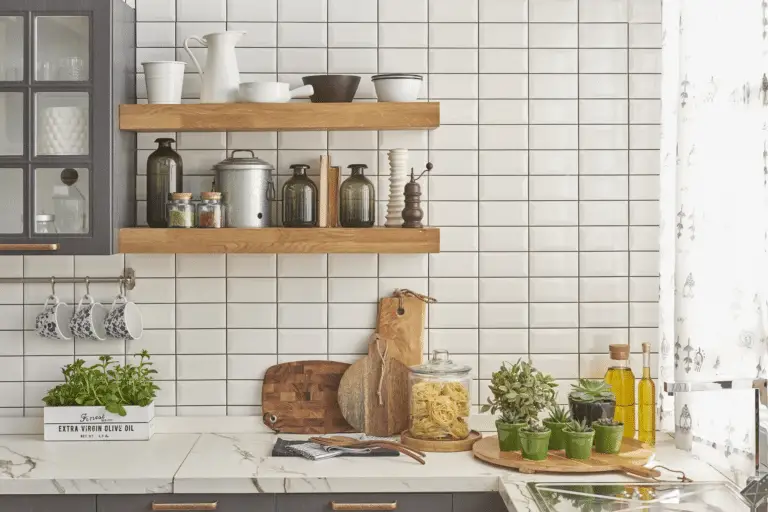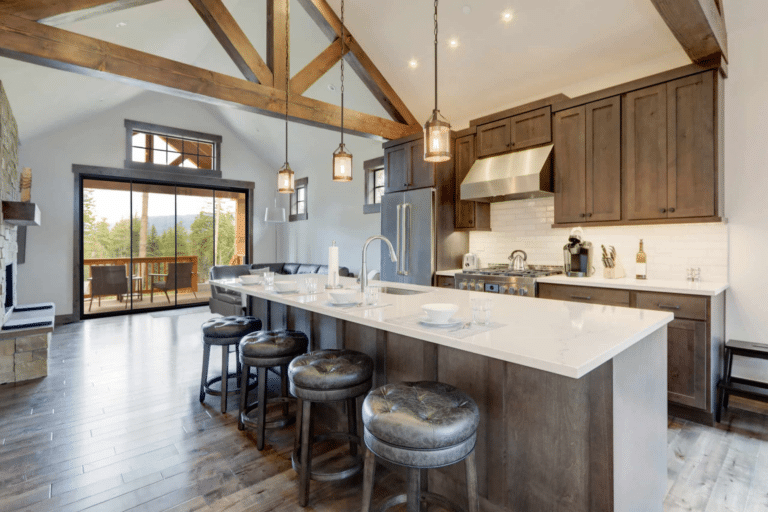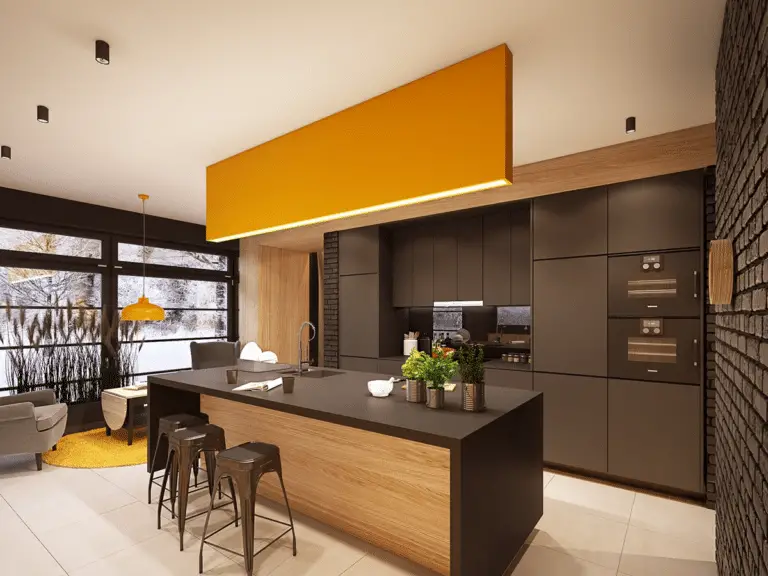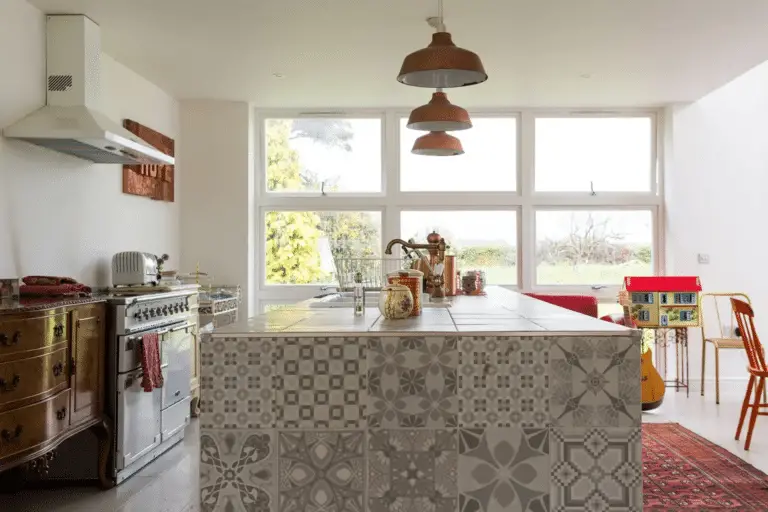Welcome to a world where open shelving reigns supreme in the realm of interior design! From residential spaces to commercial environments, open shelving has taken center stage for its versatility, affordability, and visual appeal.
In this blog post, we’ll delve into the rising trend of open shelving designs, explore notable design trends, weigh the pros and cons, and gaze into the crystal ball for future predictions. So, grab a cup of coffee and join us on this design journey of open shelving design trends!
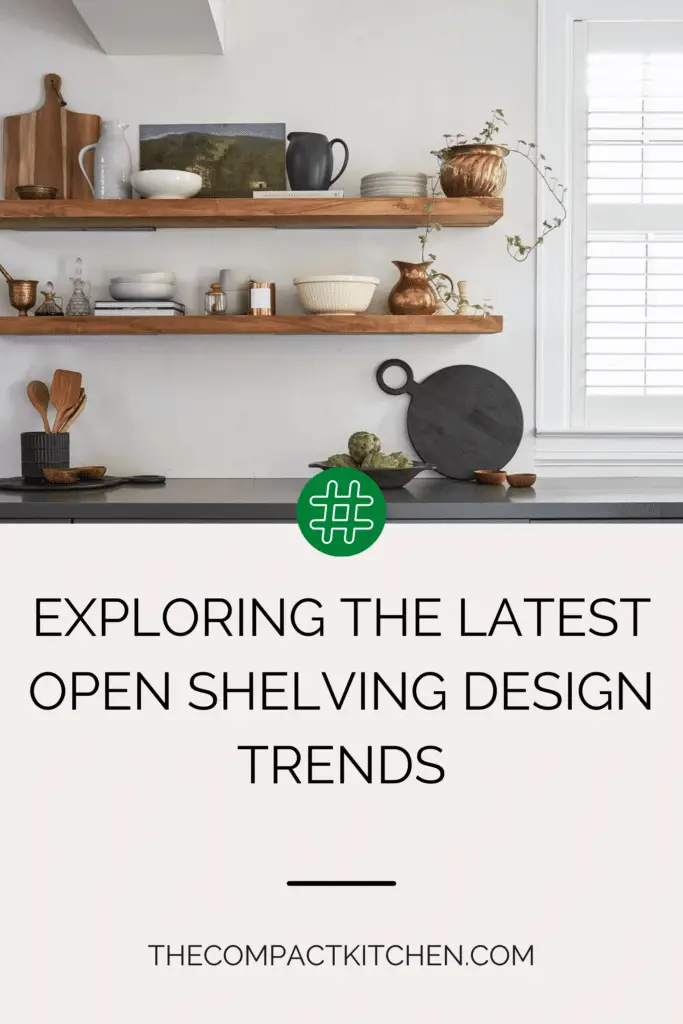
Introduction to Open Shelving
Open shelving has become a prominent feature in interior design, revolutionizing the way we approach storage solutions in both residential and commercial spaces. This design trend involves the use of shelves without doors or barriers, allowing for easy access to items and creating a visually appealing display of everyday objects.
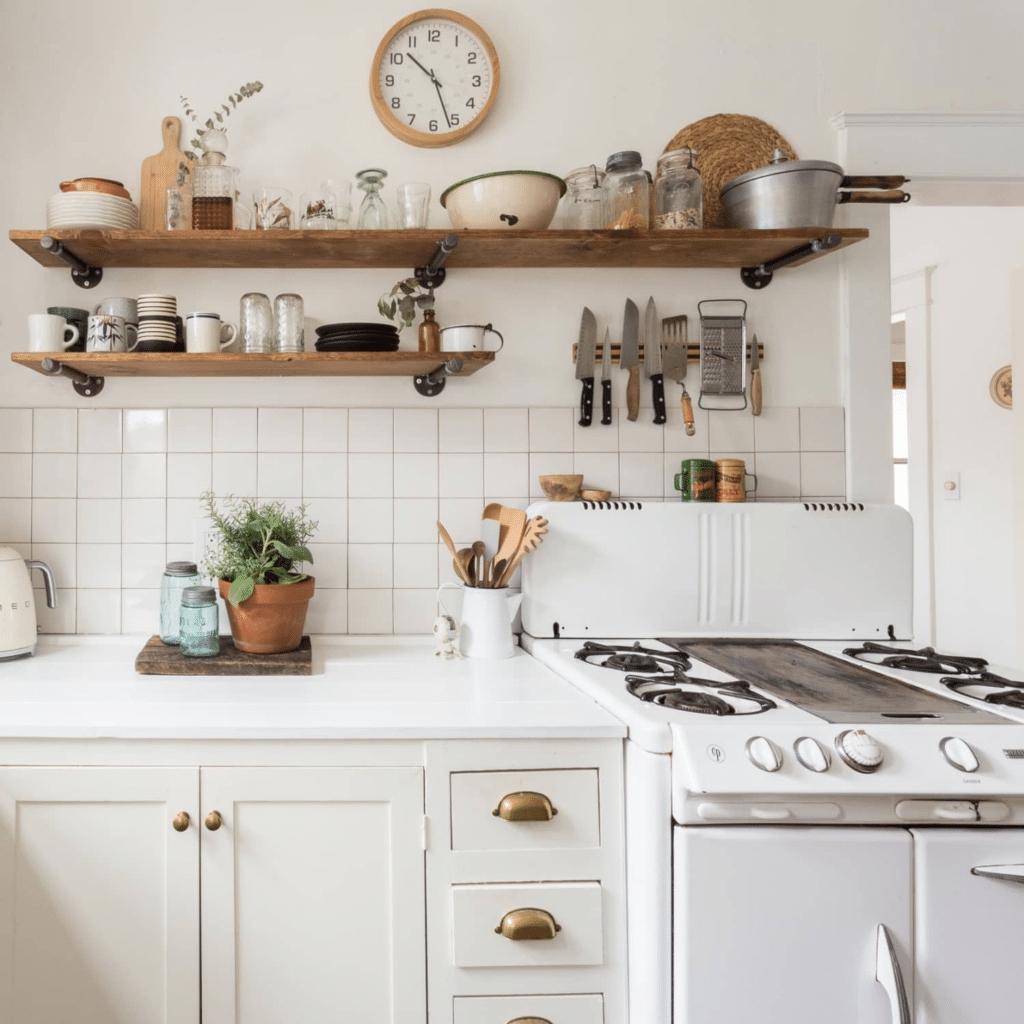
The popularity of open shelving can be attributed to its versatile design, affordability, and ability to enhance the visual aesthetics of a room. By showcasing items such as dishes, glassware, books, or decorative pieces, open shelving adds a personalized touch to any space while also maximizing functionality.
The Rising Trend of Open Shelving Designs
In recent years, open shelving designs have seen a significant rise in popularity, becoming a go-to choice for homeowners and designers alike. This trend has been fueled by the desire for a more contemporary and streamlined look in interiors, as compared to traditional closed cabinetry.

Factors contributing to the increasing popularity of open shelving include its versatility in adapting to different styles and spaces, its cost-effectiveness compared to custom cabinetry, and its ability to create a sense of openness and airiness in a room. Additionally, the visual appeal of open shelving allows for easy customization and personalization, making it a preferred choice for those seeking a unique and modern design.
The Rising Trend of Open Shelving Designs
Open shelving design has seen a significant surge in popularity in recent years, becoming a staple in contemporary interior design. This trend is not just a passing fad but has established itself as a mainstay in the design world. Let’s delve into the factors that have contributed to the widespread adoption of open shelving designs.
Versatility
One of the key reasons behind the rising popularity of open shelving is its versatility. Unlike traditional closed cabinets, open shelving allows for easy customization and personalization. Homeowners and designers have the freedom to mix and match shelves, creating unique and tailored storage solutions that suit their needs and aesthetic preferences.
Whether you prefer a minimalist look with sparse, neatly arranged items or a more eclectic display filled with plants, art pieces, and kitchen essentials, open shelving offers a blank canvas for design experimentation.
Visual Aesthetics
Another driving force behind the open shelving trend is its visual appeal. Open shelves provide an opportunity to showcase curated collections, cherished heirlooms, and decorative items, adding personality and character to a space. The open nature of the shelves creates a sense of openness and airiness, making a room feel larger and more inviting.

Furthermore, the display of items on open shelves can serve as functional decor, turning everyday kitchen essentials or bathroom products into decorative elements. This dual functionality enhances the design of a space while also promoting practicality and efficiency.
Affordable Design
Open shelving is not only visually appealing and versatile but also budget-friendly. Compared to traditional cabinetry, open shelving is often more cost-effective, making it an attractive option for homeowners on a budget. The simplicity of open shelving design makes it accessible to a wide range of individuals, regardless of their design preferences or financial constraints.
With a few simple brackets and wooden planks, you can transform a blank wall into a stylish storage solution that adds character and functionality to your space. This affordability and accessibility have contributed to the widespread adoption of open shelving in both residential and commercial settings.
Overall, the rise of open shelving design trends can be attributed to its versatility, visual appeal, and affordability. By incorporating open shelving into your interior design, you can create a personalized and stylish space that reflects your unique taste and lifestyle.
Notable Open Shelving Design Trends
When it comes to open shelving design trends, there are several notable styles that have caught the attention of interior designers and homeowners alike. These trends not only showcase the versatility and visual aesthetics of open shelving but also provide unique solutions for both residential and commercial spaces.
Industrial Chic

One of the popular open shelving design trends is the Industrial Chic style, which combines rustic elements with modern accents. Exposed pipes, reclaimed wood shelves, and metal brackets create a raw and edgy look that adds character to any space. This design trend is perfect for urban lofts, trendy cafes, and modern offices looking to make a statement.
Minimalistic Elegance

For those who prefer a clean and streamlined look, the Minimalistic Elegance trend is the way to go. Floating shelves with sleek lines, neutral color palettes, and minimal decor create a sense of openness and sophistication. This design trend is perfect for contemporary apartments, boutique stores, and upscale restaurants looking for a timeless appeal.
Mix and Match

The Mix and Match trend allows for a personalized and eclectic approach to open shelving design. Combining different materials such as wood, metal, and glass, and mixing various shelf shapes and sizes creates a dynamic and visually interesting display. This design trend is great for residential kitchens, retail stores, and creative workspaces that want to showcase a diverse collection of items.
Greenery Integration
Adding a touch of nature to open shelving design, the Greenery Integration trend emphasizes the use of plants and botanical elements. Hanging shelves with integrated planters, cascading ivy vines, and lush herb gardens bring life and freshness to any space. This design trend is perfect for cafes, spas, and residential living rooms looking to create a relaxing and natural atmosphere.

Overall, these open shelving design trends demonstrate the endless possibilities and creativity that can be achieved with this versatile design approach. Whether you prefer a minimalist aesthetic, an industrial vibe, a mix of styles, or a touch of greenery, open shelving offers a range of options to suit your personal taste and space requirements.
Pros and Cons of Open Shelving Design
Open shelving design has been a game-changer in the world of interior design, offering a modern and versatile approach to storage solutions. While the trend continues to gain popularity, it is essential to weigh the pros and cons before incorporating it into your space.
Benefits of Open Shelving
One of the key advantages of open shelving is the easy access it provides to items stored on the shelves. Unlike traditional closed cabinets, open shelving allows you to see and reach for items without having to open doors, making it a convenient choice for frequently used essentials.
In addition, open shelving design is known for its space-saving capabilities. By eliminating the need for bulky cabinets, open shelves create a more spacious and airy feel in any room. This design choice is especially beneficial for small living spaces where maximizing square footage is essential.
Moreover, open shelving can transform the aesthetics of a room, adding a touch of modernity and sophistication. The visual appeal of open shelving lies in its ability to showcase decorative items, cookware, or books, turning everyday objects into stylish decor elements.
Potential Downsides of Open Shelving
While open shelving offers numerous benefits, there are also some drawbacks to consider. One common issue with open shelving is the accumulation of dust and dirt on exposed items. Regular cleaning and maintenance are necessary to keep shelves looking tidy and presentable.
Organizing items on open shelves can also be challenging, as everything is on display and must be arranged neatly to maintain a cohesive look. Without proper organization, open shelving can quickly become cluttered and chaotic, detracting from the overall aesthetic of the space.
Another downside of open shelving design is the potential for visual clutter. If not curated carefully, open shelves can appear busy and overwhelming, especially in smaller spaces. It is essential to strike a balance between functionality and aesthetics to achieve a harmonious design.
Ultimately, the decision to incorporate open shelving into your design scheme should be based on your lifestyle, preferences, and practical needs. By weighing the pros and cons outlined above, you can make an informed choice that enhances both the functionality and visual appeal of your space.
Future Expectations and Predictions
As with any trend in the world of interior design, open shelving is constantly evolving. Designers are always looking for new ways to incorporate this versatile design element into a wide range of spaces, from residential homes to commercial environments. So, what can we expect from the future of open shelving design trends?
Adaptation to Changing Lifestyles
One major prediction for the future of open shelving design is its adaptation to changing lifestyles. As our lives become increasingly fast-paced and dynamic, the need for flexible and adaptable design solutions will only continue to grow. Open shelving provides a practical and visually appealing way to keep up with these changing demands.
Integration of Technology
Another exciting trend to look out for is the integration of technology into open shelving design. With the rise of smart home devices and sleek, minimalist gadgets, designers are finding innovative ways to incorporate these elements into open shelving units. Imagine a kitchen shelf that doubles as a charging station for your devices or a living room display that seamlessly connects to your entertainment system.
Customization and Personalization
In the future, we can expect to see a continued emphasis on customization and personalization in open shelving design. From adjustable shelves that can be rearranged on a whim to bespoke units that are tailored to fit specific needs and preferences, the possibilities are endless. Designers are pushing the boundaries of what open shelving can offer in terms of individuality and expression.
Sustainability and Eco-Friendly Solutions
With a growing awareness of environmental issues and the importance of sustainable design practices, the future of open shelving trends will likely include a focus on eco-friendly materials and solutions. Designers are exploring ways to incorporate recycled and upcycled elements into their open shelving designs, creating a more environmentally conscious approach to interior design.

Overall, the future of open shelving design trends is bright and full of exciting possibilities. By staying informed and up-to-date on the latest innovations and expert predictions, you can ensure that your space remains stylish, functional, and ahead of the curve.
Wrapping It Up: Embrace the Open Shelving Revolution
As we conclude our journey through the world of open shelving design trends, it’s clear that this concept isn’t just a passing fad – it’s here to stay. From its versatile and budget-friendly nature to its ability to transform any space, open shelving has truly become a staple in modern design. While there are some drawbacks to consider, the benefits far outweigh them.
So, whether you’re a homeowner or a business owner, embracing open shelving can bring both style and functionality to your space. Stay tuned for the next big trend in interior design!



